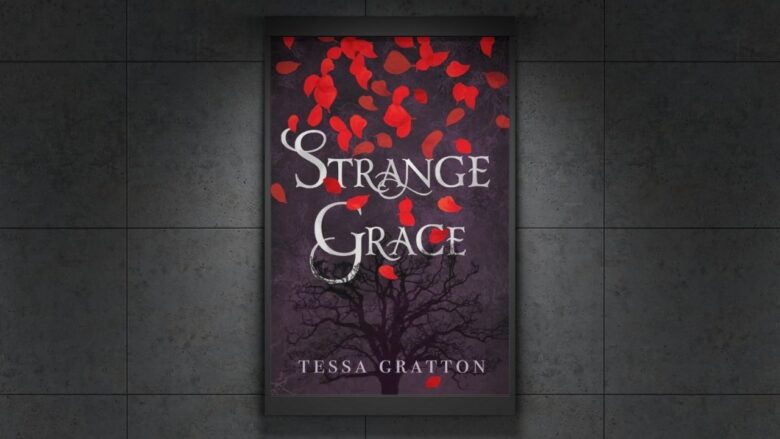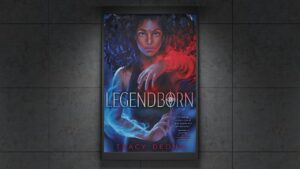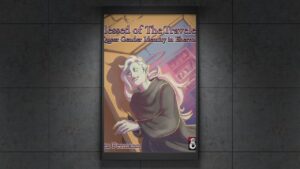Polyamory, the practice or acceptance of engaging in multiple consensual and ethical romantic relationships, is an important aspect of many LGBTQIA+ narratives. It challenges mononormative assumptions and offers space for expansive, fluid understandings of love, connection, and commitment. In literature—especially fantasy—polyamorous dynamics are not just romantic subplots but windows into how characters build trust, navigate boundaries, and create chosen families.
Fantasy is uniquely equipped to explore complex relationships. With its immersive worlds, reimagined social structures, and freedom from real-world constraints, the genre allows authors to present alternative ways of living and loving. Polyamorous dynamics in fantasy are often layered within themes of identity, power, and transformation—elements that resonate deeply with queer experiences.
Representation matters, particularly when it goes beyond visibility to offer depth and realism. For LGBTQIA+ readers, finding stories that reflect their relational realities—free from stereotypes or reductive portrayals—can be both affirming and healing. When polyamorous characters are written with care, respect, and emotional nuance, their stories open doors to broader understandings of intimacy and connection.
In this guide, we’ll highlight the best LGBTQIA+ fantasy novels that feature complex polyamorous relationships—books where love exists in many forms, and where every character and connection is fully realized. Whether you’re seeking high-stakes adventure, quiet intimacy, or richly imagined queer communities, this list is for you.
Why Polyamorous Representation in Fantasy Matters
Polyamorous representation in fantasy is not just a narrative choice—it’s a form of visibility that affirms diverse ways of loving and connecting. For many LGBTQIA+ individuals, polyamory intersects naturally with themes of queerness, chosen families, and the rejection of traditional, prescriptive norms. These intersections are especially powerful in fantasy, a genre already rooted in questioning the boundaries of the possible.
Queer communities have long embraced nontraditional forms of family and partnership, often out of necessity and resilience. In this context, polyamory isn’t just a romantic orientation—it’s part of a broader value system that emphasizes consent, communication, and mutual care. When stories reflect this, they offer more than inclusion—they reflect lived experience.
Fantasy offers a fertile space for exploring these dynamics. By creating new worlds, authors can step outside the rigid structures of patriarchy, monogamy, and binary gender. Characters are free to build relationships based on trust, mutual respect, and shared values—not default social norms. This makes fantasy an ideal genre for depicting polyamorous arrangements that are functional, emotionally rich, and fully integrated into the characters’ lives and cultures.
Moreover, the presence of ethical and consensual polyamory in fiction offers an important counterbalance to the often problematic portrayals seen in mainstream media—where love triangles dominate and jealousy is dramatized at the expense of emotional honesty. In contrast, well-written fantasy stories with polyamorous relationships emphasize clarity, care, and personal growth.
Ultimately, polyamorous representation in fantasy helps expand readers’ imaginations—not only about what love can look like, but also about the kinds of stories worth telling. It invites readers into relational models based on choice, honesty, and interdependence—values that resonate deeply across queer and speculative storytelling.
What Makes a Polyamorous Relationship “Complex” in Fiction
A complex polyamorous relationship in fiction goes beyond surface-level romance or token representation. It involves emotional nuance, interpersonal growth, and the portrayal of relationships that evolve over time. These narratives reflect the real-life intricacies of polyamory—where love isn’t just about having multiple partners, but about navigating the interconnected dynamics that come with them.
At the heart of complexity is emotional depth. Characters in polyamorous relationships should feel fully realized as individuals, not just as parts of a romantic configuration. The relationships themselves should show growth, including how the characters manage conflict, misunderstandings, and shifting emotional needs. When authors take the time to explore how each relationship within a polycule (a network of interconnected relationships) affects the others, the result is a more believable and impactful story.
Consent, communication, and boundaries are essential elements of healthy polyamory, and they should also be present in worldbuilding and character arcs. In fantasy, where societal norms may differ from the real world, these elements can be adapted in imaginative ways. Whether a character negotiates shared time between partners, or a community has cultural practices around non-monogamy, these details enrich the setting while grounding the relationships in mutual respect and ethical engagement.
It’s equally important that polyamorous relationships in fiction avoid common stereotypes. One of the most persistent is the mislabeling of polyamory as a simple “love triangle,” where a character must choose between two suitors. True polyamory, in contrast, centers on inclusive and consensual connections where choosing “both” (or more) is not only possible, but actively nurtured. Similarly, tropes that depict polyamorous relationships as inherently unstable, overly sexualized, or dominated by jealousy can reinforce harmful misconceptions.
By steering clear of clichés and investing in character-driven storytelling, authors can create polyamorous dynamics that are rich, respectful, and resonant. These stories do more than diversify relationship models—they challenge readers to rethink assumptions about love, loyalty, and the many ways people can care for one another.
Recommended Novels
Below is a curated list of fantasy novels that feature LGBTQIA+ characters in complex, polyamorous or polyamory-adjacent relationships. These works stand out for their emotional depth, rich worldbuilding, and the thoughtful ways they explore love, identity, and connection beyond traditional norms.
A Taste of Gold and Iron by Alexandra Rowland
Synopsis: In this political fantasy set in a kingdom inspired by Ottoman culture, Prince Kadou navigates the consequences of a diplomatic mishap and forms a reluctant alliance with his new bodyguard, Evemer. As tensions rise within the court, trust builds between them—and soon, something deeper begins to emerge.
Key Themes and Relationships:
- Queer romance rooted in class difference and slow trust
- Political intrigue, royal duty, and personal vulnerability
- Hints of developing polyamorous possibilities as Kadou’s relationships extend beyond Evemer in a subtle but suggestive way
Why It Stands Out: Though not explicitly labeled as polyamorous, the novel includes emotional bonds that expand the boundaries of traditional romantic arcs. Alexandra Rowland is known for writing “hopepunk” fantasy—stories where care, softness, and negotiation are central. The ethical approach to relationships and nuanced LGBTQIA+ representation make this a strong example of relational complexity in fantasy.
The Tensorate Series by Neon Yang
Synopsis: Set in a vividly imagined Asian-inspired world, the Tensorate novellas follow twins Mokoya and Akeha as they grow up in a politically divided empire that governs through magical technology. The series explores revolution, identity, and the tension between tradition and rebellion.
Key Themes and Relationships:
- Nonbinary and gender-fluid characters in a culture with flexible gender roles
- Family, autonomy, and resistance
- Nontraditional relational structures, including communal and polyamorous bonds
Why It Stands Out: Neon Yang’s work blends speculative science and fantasy with queer identity at its core. Relationships in Tensorate are not always named by Western terms, but they reflect polyamorous values: shared emotional intimacy, non-possessiveness, and collective care. The worldbuilding makes space for diverse romantic and familial configurations without moral judgment.
The Priory of the Orange Tree by Samantha Shannon
Synopsis: In this sweeping high fantasy, a divided world must confront a rising threat from an ancient dragon. At the heart of the story are powerful women from different nations—one a dragon rider, another a mage-queen—whose destinies intertwine.
Key Themes and Relationships:
- Strong sapphic romance between central female leads
- Matriarchal power structures and political alliance
- Themes of legacy, fertility, and sacrifice
Why It Stands Out: While the central romance is monogamous, the expansive cast and layered political systems invite interpretations of broader emotional and romantic networks. The novel doesn’t portray polyamory explicitly, but its exploration of chosen family, loyalty, and female solidarity offers a foundation for nontraditional relationship reading.
The Long Way to a Small, Angry Planet by Becky Chambers
Synopsis: A warm and character-driven space opera, this novel follows the multispecies crew of the Wayfarer as they tunnel wormholes through space. Each member of the crew brings a unique perspective on identity, culture, and love.
Key Themes and Relationships:
- Queer, trans, and nonhuman characters
- Explicitly polyamorous relationships treated with care and normalcy
- Found family, cross-species empathy, and communication
Why It Stands Out: This is one of the clearest and most respectful depictions of polyamory in speculative fiction. Characters engage in open, honest relationships with shared expectations and support. Chambers treats these dynamics not as novelties or plot devices, but as integral to the emotional realism of the crew. The story celebrates care, autonomy, and community in equal measure.
Ninefox Gambit by Yoon Ha Lee
Synopsis: In this militaristic space fantasy, Captain Kel Cheris must ally with the ghost of a brilliant and unstable general to retake a fortress under rebel control. The story unfolds in a mathematically complex society where conformity is enforced through calendrical warfare.
Key Themes and Relationships:
- Queer identity and disembodied intimacy
- Power, strategy, and psychological complexity
- Fluidity of identity and perception of self
Why It Stands Out: Though polyamory is not foregrounded in the conventional sense, the relationship between Cheris and Shuos Jedao—who share a body—defies standard emotional structures. Their connection complicates identity, consent, and intimacy in profound ways. The novel doesn’t present romantic polyamory, but it challenges the singular, stable concept of self and connection, aligning with many queer and polyamorous frameworks.
Emerging Authors and Indie Gems
While mainstream fantasy is gradually embracing queer and polyamorous narratives, many of the most innovative and authentic stories come from independent authors and small presses. These writers often have more creative freedom to explore nontraditional relationships with honesty, nuance, and emotional depth. Below are a few standout titles that deserve more attention for their exploration of queer polyamory in fantasy settings.
1. An Unkindness of Ghosts by Rivers Solomon
Blurb: Set aboard a generation ship with a rigid class and racial hierarchy, this novel follows Aster, a neurodivergent healer unraveling the truth behind her mother’s death. While the central narrative is more focused on survival and liberation, Solomon weaves in subtle layers of non-normative intimacy and queer community care that hint at polyamorous dynamics.
Why It Stands Out: Rivers Solomon creates emotionally rich, intersectional characters whose relationships resist simple labels. Their storytelling prioritizes mutual care and interdependence over prescriptive romance models.
2. The Calyx Charm by May Peterson
Blurb: This romantic fantasy features trans protagonists, necromancy, and dreamlike prose. The story unfolds between two lovers—one alive, one dead—who must work through trauma, identity, and transformation. Their bond extends into an open emotional network that challenges binaries in love and power.
Why It Stands Out: Peterson blends romance and spirituality in a way that reflects many core values of queer polyamory: openness, transition, and deep emotional negotiation. Though not labeled as poly, the relationships move in that direction organically.
3. A Promise of Stars by Tessa Barbosa
Blurb: Set in a world inspired by Filipino mythology, this novel follows a prince with prophetic dreams and a band of rebels aiming to unseat an empire. The romantic subplot involves a slow-building connection between three characters whose fates are intertwined.
Why It Stands Out: This book presents a refreshingly non-Eurocentric fantasy world with polyamorous potential embedded in its plot. The romantic tension is handled with emotional care and cultural sensitivity.
4. A Touch of Stone and Snow by Milla Vane (Meljean Brook)
Blurb: A gritty, romantic high fantasy where love, loyalty, and honor collide. While the primary romance is central, the protagonist’s emotional ties to others—including past lovers and comrades—create a tapestry of layered connection and implicit poly dynamics.
Why It Stands Out: Vane balances intimacy and action while honoring the emotional reality of having multiple significant bonds. Readers looking for non-monogamous nuance in a traditional epic format will find it here.
5. Our Bloody Pearl by D.N. Bryn
Blurb: This mermaid fantasy features a genderfluid siren and a human pirate who form an unconventional bond. As they confront external threats, their relationship evolves with other characters in a way that suggests an open-ended, poly-friendly worldview.
Why It Stands Out: The novel’s inclusive representation of gender and disability is matched by its fluid, queer-affirming approach to relationships. It avoids labels but creates a strong foundation for multiple intimate, respectful connections.
Have a Favorite Indie Title?
The richness of queer polyamorous storytelling isn’t limited to well-known authors. Many hidden gems are waiting to be discovered, often from self-published writers or small indie presses. If you’ve read a book that deserves a spotlight—whether fantasy, science fiction, or something in between—drop it in the comments or reach out on social media. We’d love to expand this list with recommendations from the community.
What to Look for When Choosing a Polyamorous Fantasy Novel
Not all books that include multiple relationships represent polyamory with care and complexity. To find stories that truly resonate—especially those centering queer experiences—it’s important to look beyond surface-level representation. Here are a few key criteria to keep in mind when selecting a polyamorous fantasy novel.
1. Depth Over Drama
One of the most common misconceptions in fiction is that multiple-partner relationships must be driven by jealousy, rivalry, or betrayal. Quality polyamorous stories prioritize emotional realism over sensationalism. Look for books where characters navigate relationships with vulnerability, trust, and communication—even when things get messy. A story grounded in authentic emotional stakes will feel more truthful than one built on artificial tension or romantic clichés.
Avoid narratives that confuse polyamory with unresolved love triangles or that treat multiple partners as a source of conflict. Instead, seek stories that explore relationship-building, consent, and shared goals, even amid fantastical settings.
2. Respectful Portrayals of Identity and Love
Polyamorous representation should go hand-in-hand with respectful treatment of LGBTQIA+ identities. This includes avoiding tokenism, fetishization, or reductive character tropes. A thoughtful fantasy novel will treat queerness and polyamory as integral parts of the characters’ identities—not just plot devices.
Authors who take the time to portray healthy relationship dynamics, including conversations about boundaries, emotional labor, and evolving needs, offer readers more than just visibility. These stories provide models of ethical non-monogamy, offering affirmation rather than dramatization.
Look for novels where the emotional labor of maintaining multiple relationships is acknowledged—and where characters’ experiences of gender, sexuality, and love are multidimensional and contextually grounded.
3. Intersectionality and Inclusive Worldbuilding
Meaningful polyamorous representation doesn’t exist in a vacuum. The best stories consider how other identities—race, gender identity, disability, class, neurodivergence, and more—shape characters’ experiences. Intersectionality adds depth to character development and prevents monolithic portrayals of queer or polyamorous life.
A fantasy setting that embraces cultural diversity, non-Western relationship norms, and alternative family structures is more likely to present polyamory in ways that reflect the complexity of real-life communities. Pay attention to how the world treats difference—not just in magic or politics, but in social values around love, family, and intimacy.
When a novel respects intersectional identities and shows how they interact with relational structures, it fosters more inclusive, nuanced storytelling that resonates across a wider range of readers.
Choosing the right polyamorous fantasy novel means finding a story that takes both its worldbuilding and its relationships seriously. By prioritizing emotional nuance, respectful identity representation, and intersectional awareness, readers can discover works that not only entertain but also validate and expand their understanding of love in all its forms.
Conclusion
The growing diversity in fantasy literature is not just a trend—it’s a necessary and long-overdue shift toward more inclusive, honest, and resonant storytelling. As authors and readers push beyond traditional narratives, we’re seeing worlds where queer identities, polyamorous relationships, and complex emotional dynamics are not only possible but celebrated.
Stories that reflect all forms of love—whether romantic, platonic, communal, or chosen—offer readers more than escapism. They provide mirrors, maps, and new possibilities. By highlighting polyamorous relationships within fantasy settings, these novels challenge assumptions, broaden emotional language, and invite deeper conversations about what love can look like.
Whether you’re new to polyamorous themes in fiction or actively seeking out books that align with your lived experience, there’s never been a better time to explore this rich and expanding corner of the fantasy genre.
We encourage you to keep reading, keep recommending, and—most importantly—keep imagining love in all its multifaceted forms.




